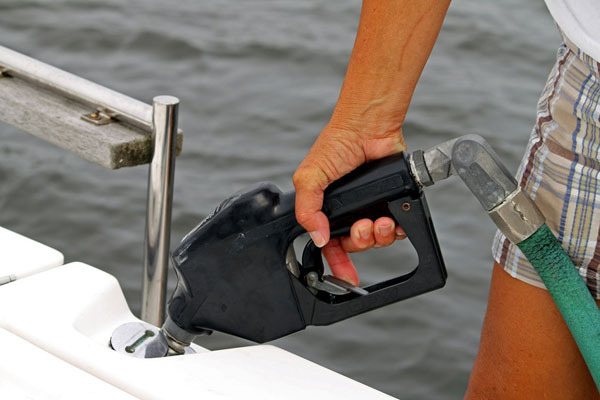When you do something often, it’s easy to get lazy and begin to take shortcuts. Like fueling your boat. You’ve done it so often, you could gas up with your eyes closed ….
But there are very few things in boating as potentially deadly as improper fueling – particularly with gasoline. The vapor from just one cup of gasoline can pack the explosive power of five pounds of dynamite. Gasoline can burn at 15,000 degrees Fahrenheit, melting and burning a boat to the waterline in just minutes. You’ve heard this before, but we’d like to offer this reminder of the 8 steps to safely fueling your boat:
Everyone Ashore
Insist that your crew stretch their legs while you fuel up. Reduce the chances of dangerous behavior and potential injury by clearing the boat before you fuel.
Batten the Hatches
Close all hatches, doors and ports before fueling. Gas fumes from outside are heavier than air and could sink into the lower parts of the boat, lying in wait for a spark, or just a rush of fresh air, to induce combustion.
Shut it Down
Turn off engines, electronics and extinguish all flames and smoking materials.
Check Twice
Particularly if a less-experienced crew member is doing the fueling. Is the nozzle going into the fuel fill? Sounds simple, but you’d be amazed at how often fuel is pumped into rod holders and water tanks.
No Static
You must make and maintain firm metal-to-metal contact between the pump nozzle and your boat’s fuel deck pipe. This grounds the nozzle and prevents a spark created by static electricity.
Man the Handle
Gas dock fill handles do not have trigger catches to keep them open while unattended. Never attempt to defeat this by inserting a can, ball or other object into the handle while fueling as this can lead to overfilling and a spill (see below).
Know How Much You’re Pumping
Most boats are designed so that overfilling spills fuel out of the vent and into the water, and such spills are fineable under Federal law. Clicking on the ignition to check the fuel gauge creates a spark that could lead to ignition, so look at the fuel gauge prior to filling. This coupled with knowledge of the tank’s capacity allows you to stop the flow when full or nearly so by monitoring the rate on the pump. Can’t see the pump? Ask a dock hand to stop the pump at a set number of gallons, or assign a crew member to call out to you. If you do overfill and create a spill, tell a dock hand immediately so he can help contain and clean the spill.
Sniff Test
Fueling complete, open the hatches and sniff for gas fumes in the bilge and engine compartment. If all smells well, run the blower for four minutes before starting the engines.

Thank you for this article concerning how to fuel a boat safely. It is good to know that everyone should be ashore while the fuel is being injected. It is good to reduce the possibility of danger in any way possible. Something else to consider would be to have the boat inspected often to ensure that the gas tank does not have any unknown issues.